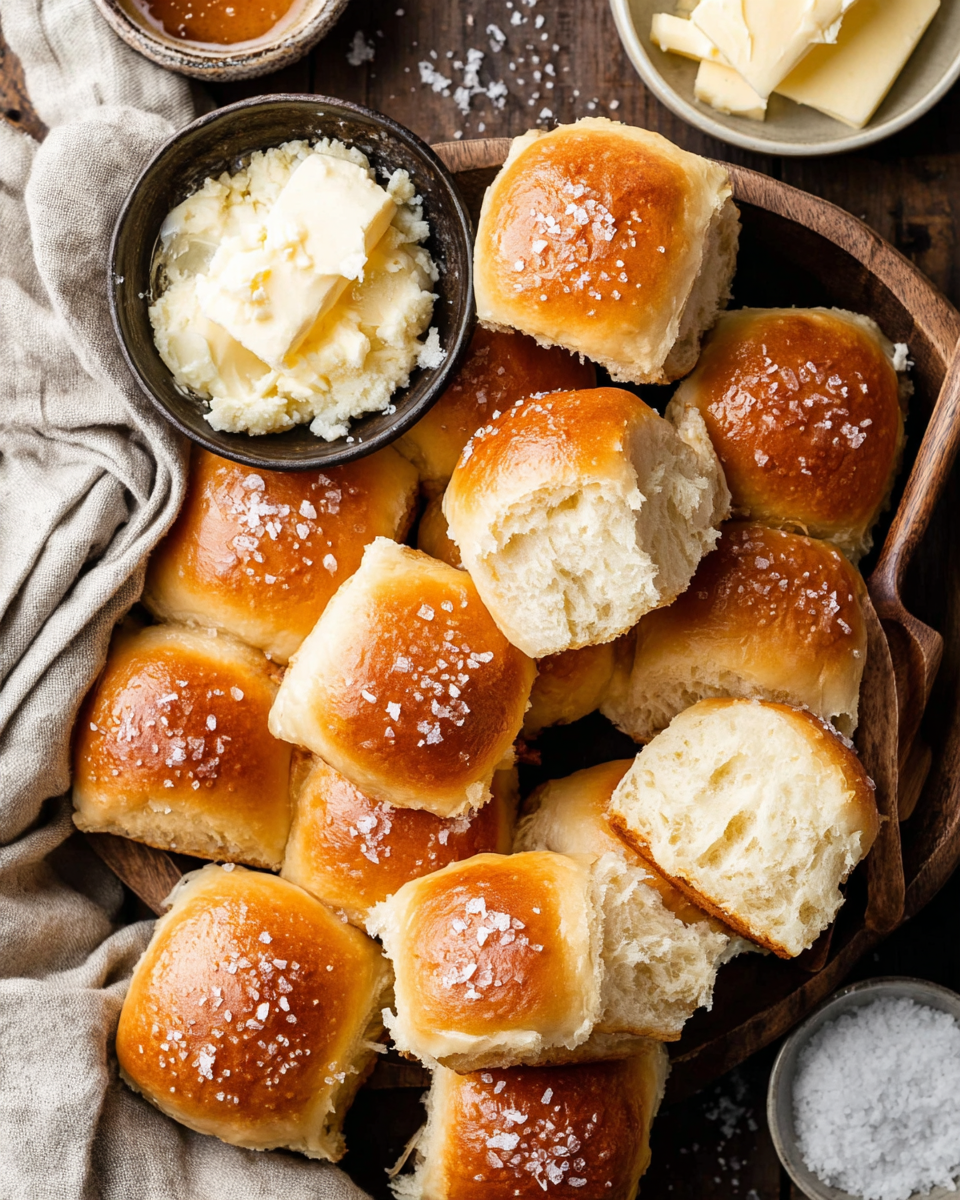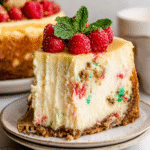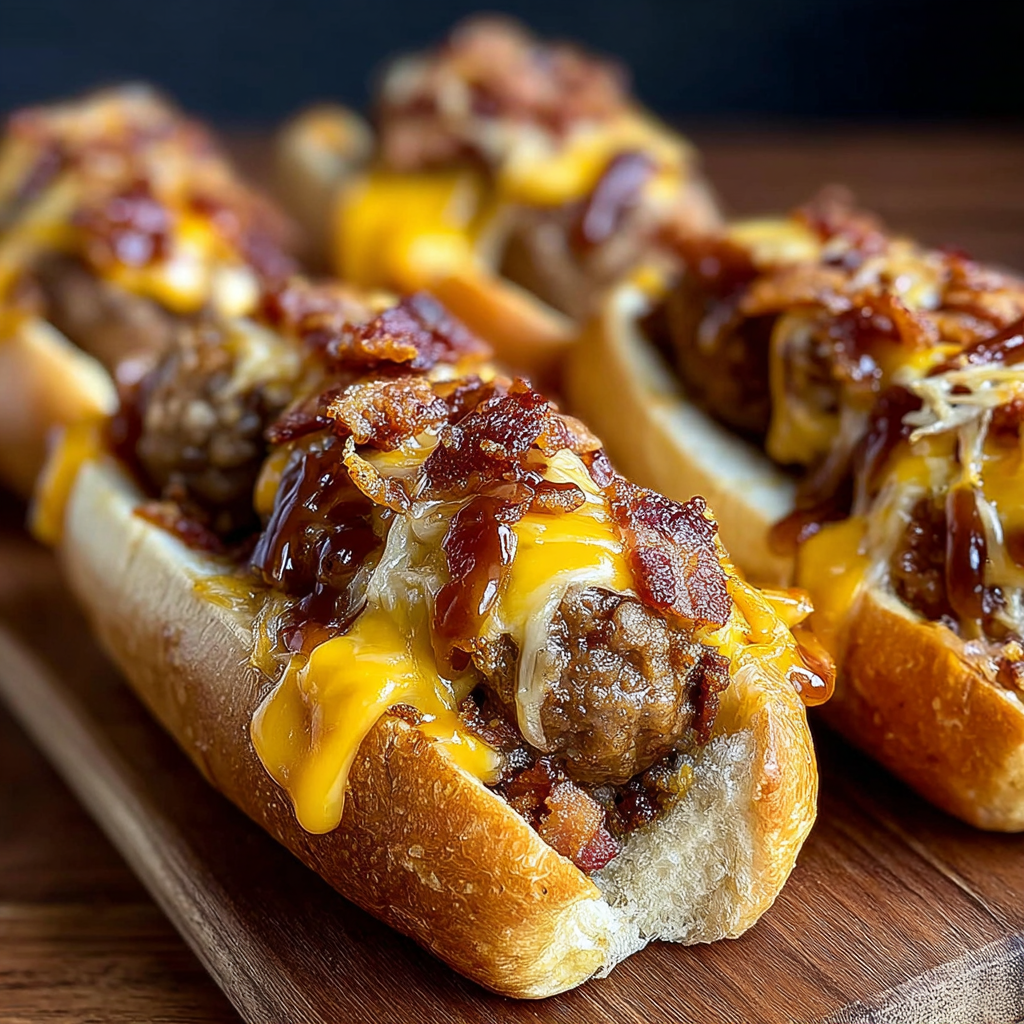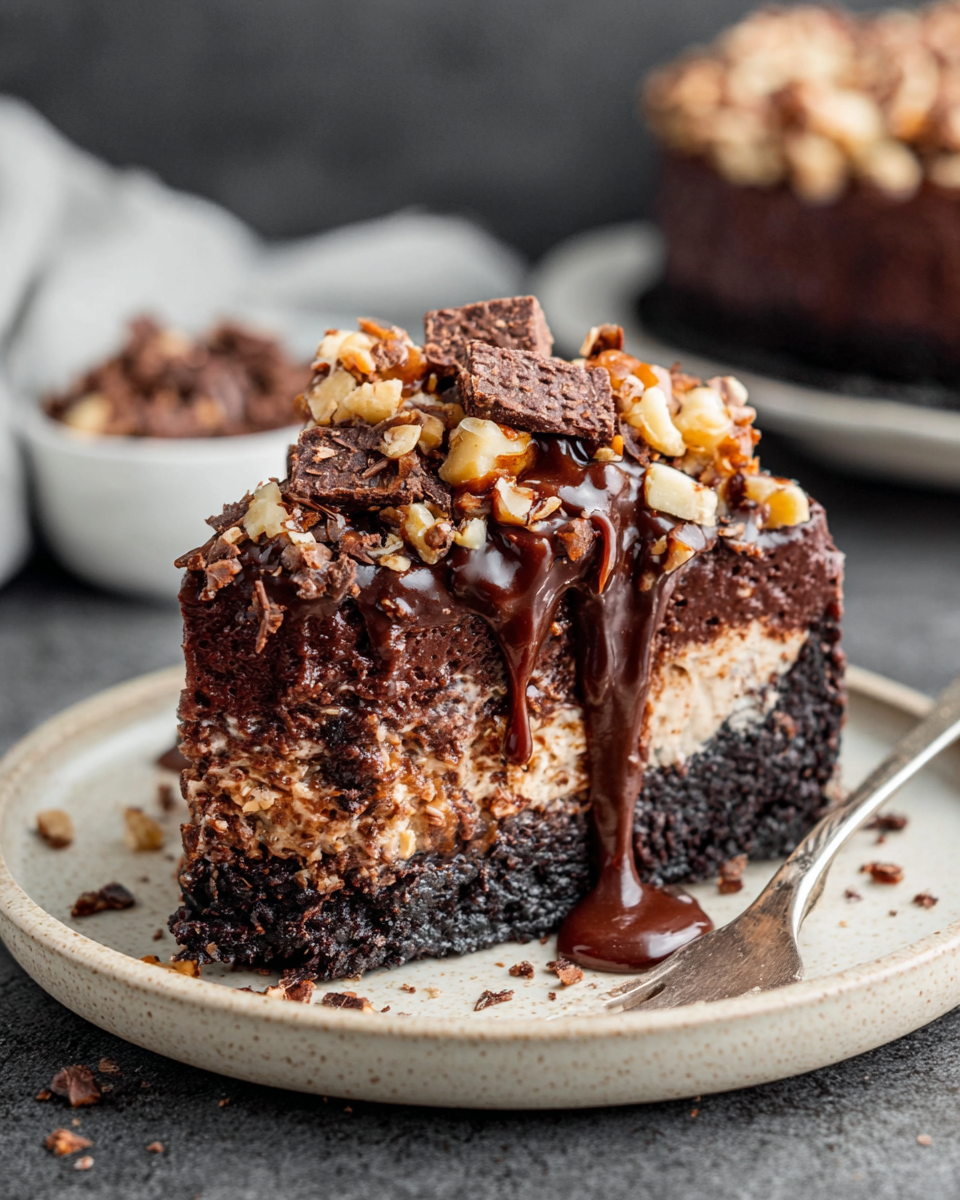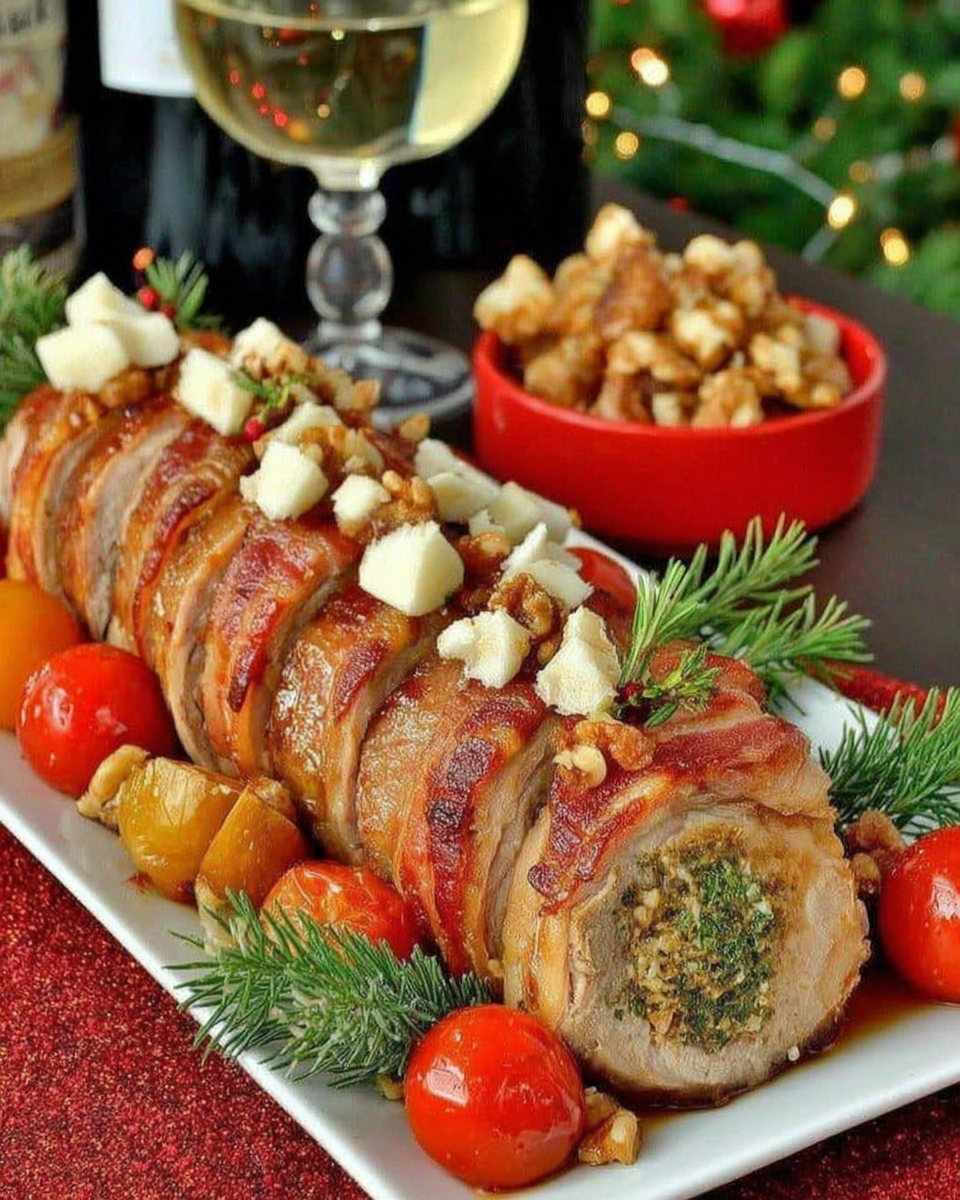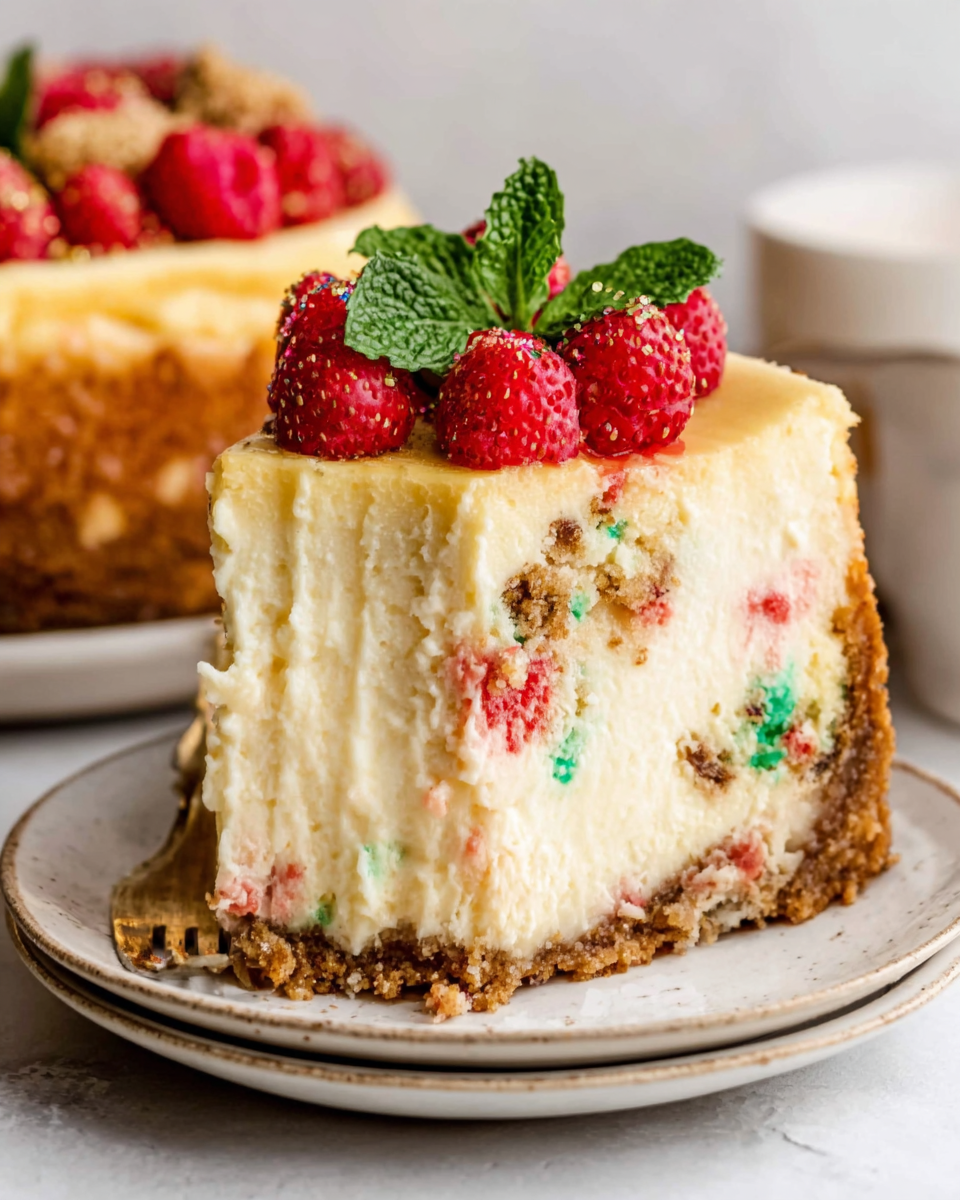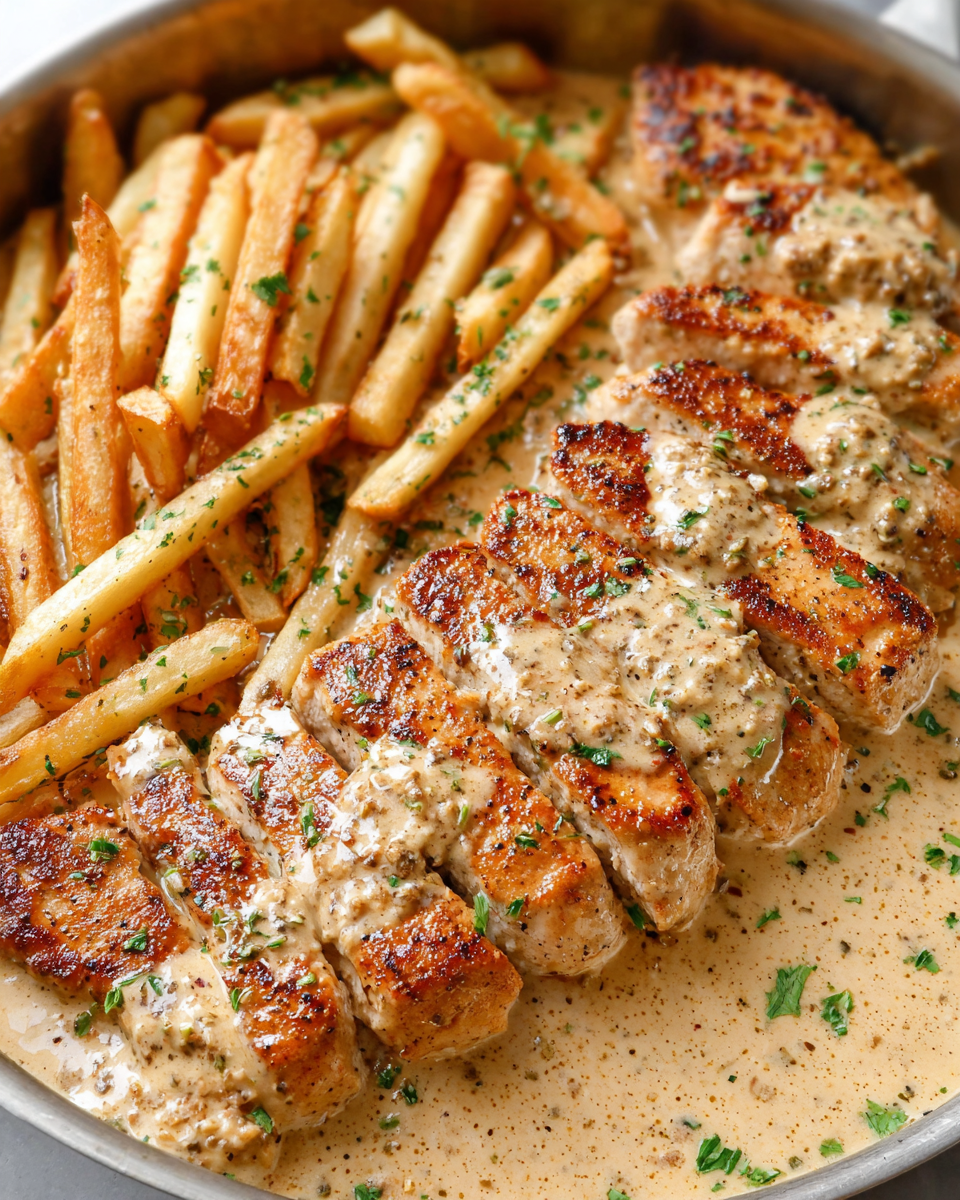Introduction
Nothing elevates a meal like a batch of warm, pillowy Parker House rolls slathered in salted honey butter. These sweet and savory rolls are the perfect companion to any dinner table, whether it's a holiday feast or a cozy weeknight meal. The combination of soft dough and rich toppings creates an irresistible treat that everyone will love.
The secret to achieving these delightful rolls lies not only in the dough but also in the unique flavor of the salted honey butter. This simple yet luxurious addition turns an everyday roll into a culinary experience, enhancing each bite with a perfect balance of sweetness and saltiness.
Let’s dive into crafting these delectable rolls that will impress your family and friends, bringing a touch of warmth and comfort to your dining experience.
Ingredients
- 4 cups all-purpose flour
Flour provides the foundational structure for the rolls. All-purpose flour balances protein content for a tender, yet sturdy roll. - 1 packet (2 1/4 tsp) active dry yeast
Yeast is essential for leavening, allowing the rolls to rise and become light and airy. Using active dry yeast activates the fermentation process for excellent flavor. - 1/4 cup granulated sugar
Sugar sweetens the dough and also helps feed the yeast, promoting a better rise and contributing to a golden-brown crust. - 1 1/2 cups whole milk
Whole milk adds moisture and richness to the dough, creating a tender texture. It also helps dissolve the sugar and yeast, aiding in the fermentation process. - 1/2 cup unsalted butter, melted
Butter enhances flavor and contributes to the rolls' tenderness. The fat coats the flour proteins, resulting in a softer texture. - 1 teaspoon salt
Salt enhances flavor and helps strengthen the gluten structure in the dough, producing chewier rolls. - 1/4 cup honey
Honey adds a natural sweetness and depth of flavor to the rolls, complementing the salted butter beautifully. - 1/2 cup salted butter, softened
This butter serves as the main flavor component for the topping, bringing richness and a savory contrast to the sweet honey.
Directions & Preparation
Step 1: Activate the yeast.
In a small bowl, combine warm milk and sugar with the yeast. Let it sit for about 5–10 minutes until frothy. This step is crucial for activating the yeast, ensuring that your rolls rise beautifully. The frothy top indicates that the yeast is alive and ready to work.
Step 2: Mix the dry ingredients.
In a large bowl, whisk together flour and salt. Mixing these dry ingredients before adding the wet ones ensures even distribution of salt and strengthens the gluten network, crucial for the roll's structure.
Step 3: Combine wet and dry ingredients.
Add the activated yeast mixture and melted butter to the flour mixture. Stir until a shaggy dough forms. This step melds all the flavors and textures, setting the stage for a beautiful dough.
Step 4: Knead the dough.
Transfer the dough to a floured surface and knead for 8-10 minutes until smooth and elastic. Kneading develops gluten structure, giving the rolls their desired chewiness and airy texture.
Step 5: First rise.
Place the kneaded dough into a greased bowl, cover with a damp cloth, and let it rise in a warm place for 1-2 hours or until doubled in size. This step allows the dough to aerate, giving it that light and fluffy finish.
Step 6: Shape the rolls.
Divide the risen dough into equal portions and shape each into a ball. Place the balls on a greased baking sheet with space in between. Shaping helps create a uniform size for even baking and a pleasant appearance.
Step 7: Second rise.
Cover the shaped rolls with a towel and let them rise for another 30-45 minutes until puffy. The second rise ensures that the rolls are extra airy and light, contributing to a better texture.
Step 8: Preheat the oven.
Preheat your oven to 350°F (175°C). An adequately heated oven is vital for baking the rolls evenly, ensuring a golden crust while maintaining a soft inside.
Step 9: Bake the rolls.
Bake the rolls for 15-20 minutes until golden brown. The baking time is crucial as it allows the outer crust to develop while the inside remains soft and fluffy.
Step 10: Prepare the salted honey butter.
While the rolls are baking, mix softened salted butter with honey in a bowl until well combined. This enhances the rolls with a delightful topping that's both sweet and savory.
Step 11: Glaze and serve.
Once the rolls are out of the oven, brush them with the salted honey butter while still warm. This final touch adds a rich flavor and a shiny finish, making them irresistible to everyone at the table.

The Importance of Kneading in Bread Making
Kneading is a crucial step in baking rolls that many home cooks often overlook. This process develops the gluten in the flour, ensuring the rolls rise properly and have the desired texture. An under-kneaded dough will result in dense, heavy rolls, while over-kneading can lead to tough textures. A well-kneaded dough feels smooth and elastic, a true sign that the gluten has developed enough for the perfect Parker House roll.
Choosing the Right Honey
The choice of honey can significantly impact the flavor of your salted honey butter. Different types of honey carry distinct flavors—wildflower honey brings a floral note, while clover honey is milder and sweeter. Experimenting with various types of honey can yield exciting results, allowing you to tailor the richness of your rolls to your preference. Aim for raw or locally sourced honey to capture the best flavors.
Serving Suggestions for Parker House Rolls
These salted honey butter Parker House rolls shine at any meal, from holiday feasts to casual dinner gatherings. Serve them alongside a rich gravy or as a base for sliders at your next barbecue. Their sweet and salty profile pairs wonderfully with savory meats and roasted vegetables, while their light texture makes them a delightful addition to any bread basket. Consider offering a variety of butters to enhance the experience.
FAQs
What if my dough doesn't rise properly?
Ensure your yeast is fresh and that you're using warm (not hot) milk. If the dough is in a cold environment, find a warmer spot to encourage fermentation.
Can I use instant yeast instead of active dry yeast?
Yes, you can substitute instant yeast while reducing the amount slightly, usually 25% less than active dry yeast. Instant yeast doesn't require proofing, so you can mix it directly with your dry ingredients.
What should I do if the rolls turn out too dense?
Density can result from over-kneading or insufficient rising time. Ensure to knead just until smooth and allow the dough to fully double in size during each rise.
How can I adjust the sweetness of the honey butter?
Feel free to add more or less honey to your butter mixture according to your taste preference. Start with the recipe amount and then adjust to achieve your desired sweetness.
What if the baked rolls are too flaky?
If your rolls are overly flaky, it might indicate too much flour or inadequate mixing. Be mindful to measure flour accurately and mix until just combined.
Can I make smaller or larger rolls with this recipe?
Absolutely! Adjust the portion sizes of the dough balls to make smaller dinner rolls or larger sandwich rolls, but be mindful of the baking time as it will vary.
Conclusion
Baking salted honey butter Parker House rolls is a rewarding experience that adds a touch of warmth to any meal. The combination of their tender texture and rich flavors makes them a true standout, inviting everyone to gather around the table.
Whether you enjoy them fresh out of the oven or as leftovers transformed into delightful sandwiches, these rolls are sure to become a beloved staple in your home.
Recipe Card
Sugar Cookie Cheesecake Recipe from Stephanie's Sweet Treats
Ingredients
- 1 cup all-purpose flour
- 1/2 teaspoon baking powder
- 1/4 teaspoon salt
- 1/2 cup unsalted butter softened
- 1/3 cup granulated sugar
- 1 teaspoon vanilla extract
- 1 package 8 oz cream cheese, softened
- 1/2 cup powdered sugar
- 1 teaspoon lemon juice
- 1 egg
Instructions
- Preheat your oven to 350°F (175°C).
- In a bowl, whisk together the flour, baking powder, and salt in a separate bowl.
- In a separate bowl, cream the butter and sugar until light and fluffy.
- Add in the vanilla extract, mixing until combined, then gradually add the dry ingredients.
- Press the cookie dough evenly into the bottom of a greased 9-inch round springform pan.
- Bake for 12-15 minutes or until lightly golden; remove from oven and let cool.
- In a mixing bowl, beat the cream cheese until smooth, then add powdered sugar and lemon juice.
- Add the egg and mix until just combined; do not overmix.
- Pour the cheesecake filling over the cooled cookie crust, spreading evenly.
- Bake for 30-35 minutes until the edges are set and the center is slightly jiggly.
- Allow the cheesecake to cool at room temperature, then refrigerate for at least 4 hours before serving.
Notes
Additional serving suggestions: pair with a crisp salad, garlic bread, or roasted seasonal vegetables for balance.
For make-ahead, prep components separately and assemble just before heating to preserve texture.
Taste and adjust with acid (lemon/vinegar) and salt right at the end to wake up flavors.
